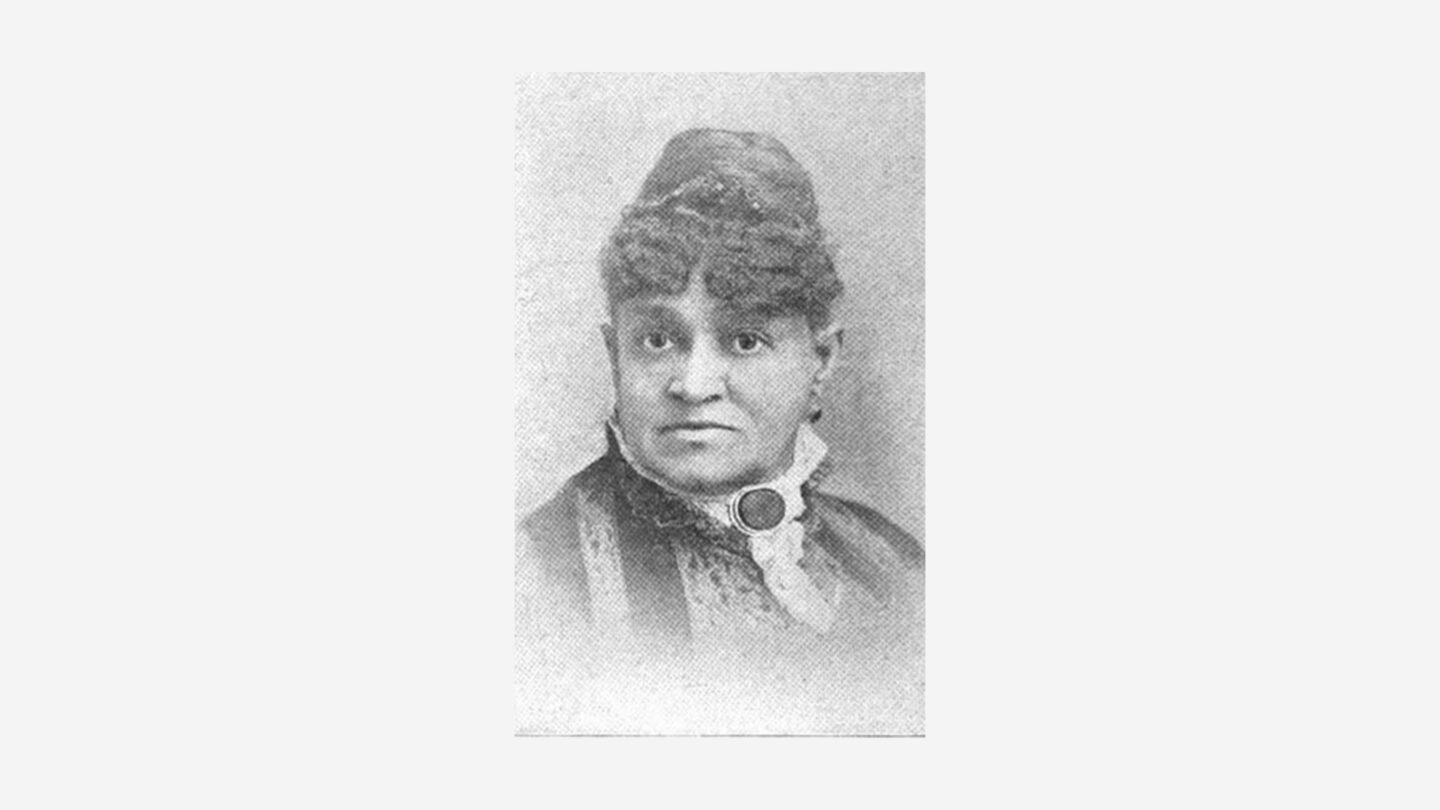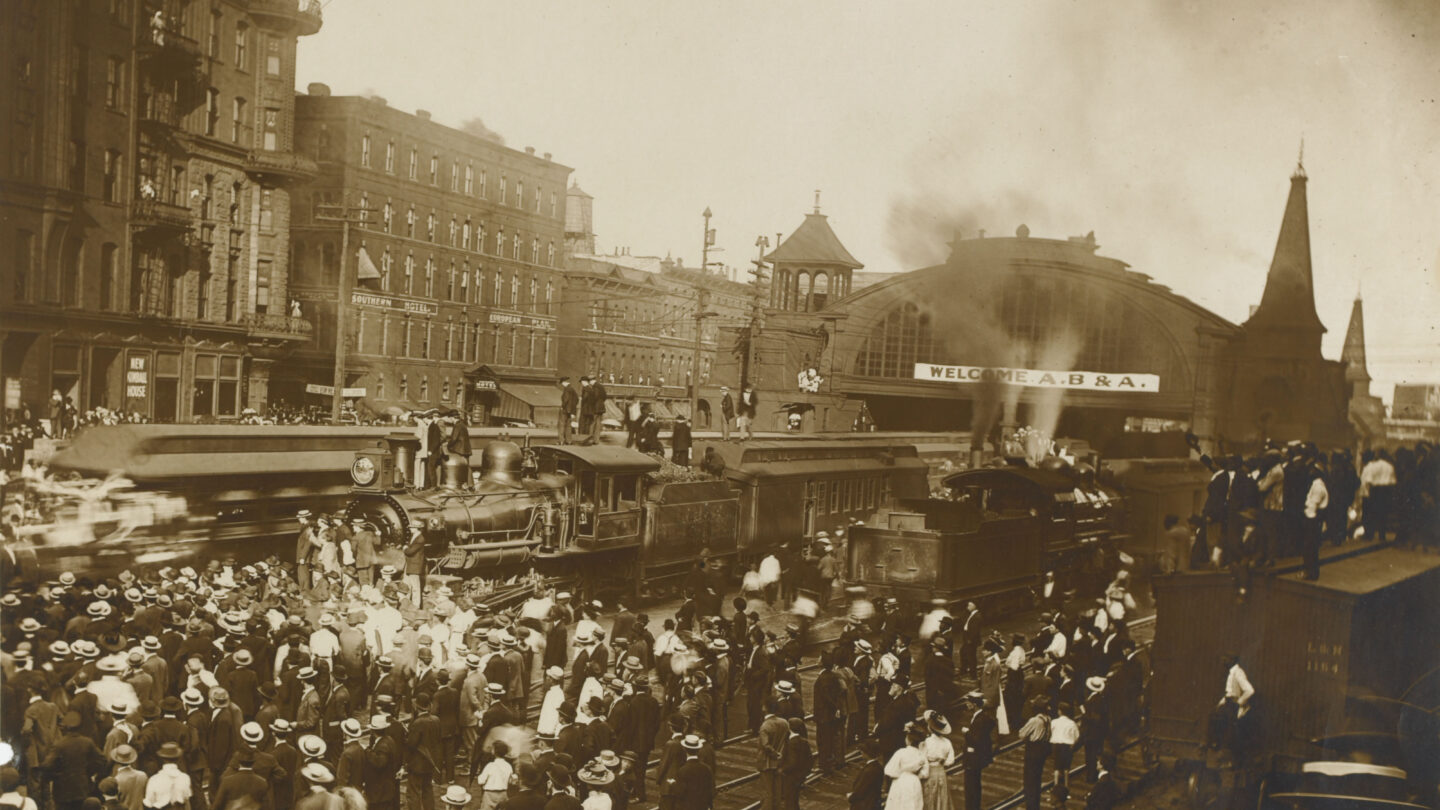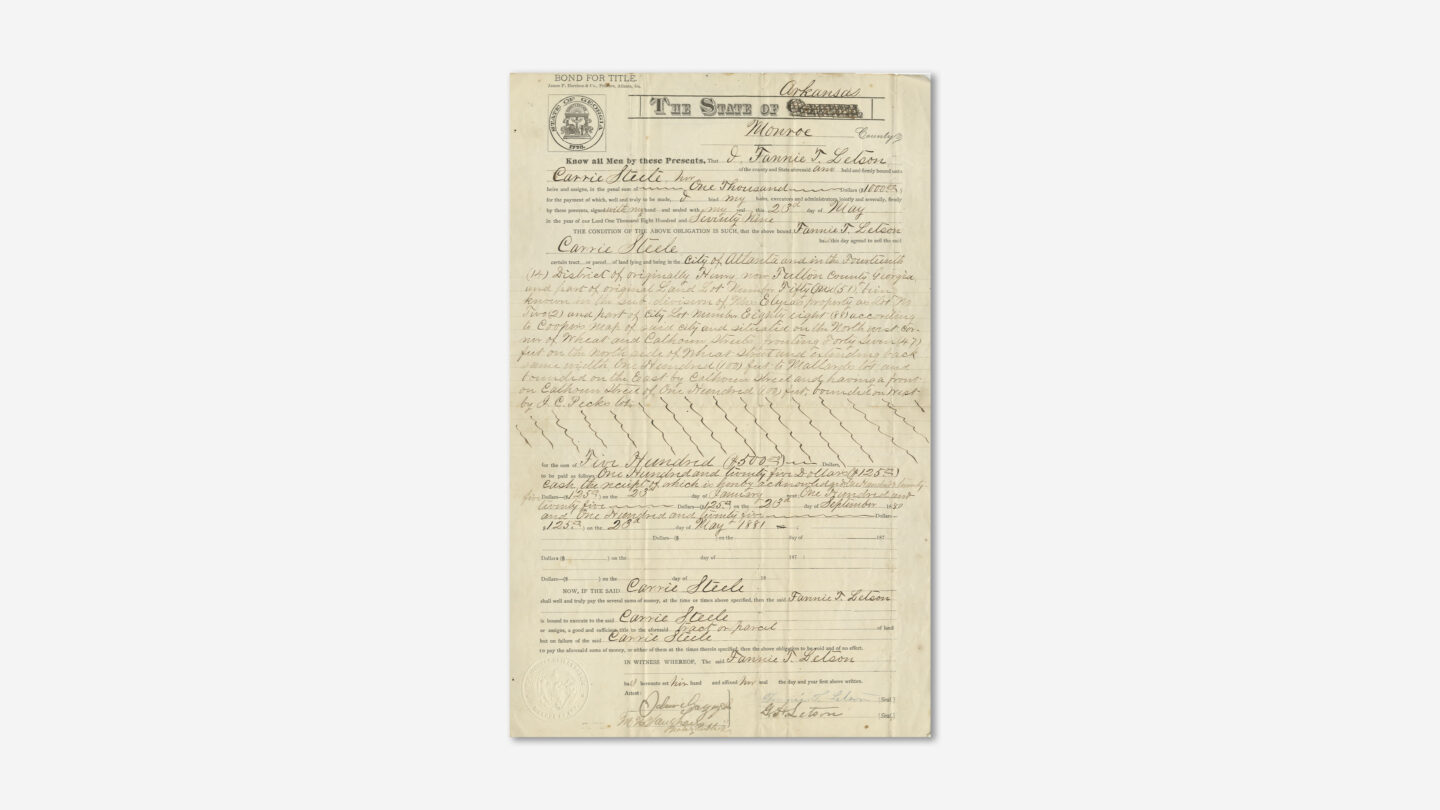Looking at the simple brick cottages that make up the Carrie Steele-Pitts Home at 667 Fairburn Road, one would never know that the organization situated there is the oldest Black orphanage in the United States or the incredible story of its selfless founder, Carrie Steele Logan.

Carrie Steele Logan in a photo from “Progress of a Race” by Henry F. Kletzing and William Henry Crogman.
Carrie Steele was born enslaved in 1829 and orphaned as a child. At the age of 36, she became a free woman with the passage of the 13th Amendment, which abolished slavery in the U.S. She began working as a maid at the Union Station passenger depot in downtown Atlanta. During her time working at the depot, Steele often found babies and children in restrooms and waiting rooms who had been abandoned by their caretakers. She felt compassion for the children because she knew what it was to be alone in the world. As a result, she resolved to do something for orphaned children, refusing to allow them to feel the loneliness of orphanhood that she had felt.

View of Union Station in Atlanta, Georgia as the Atlanta Chamber of Commerce Special passenger train is welcomed by a crowd of people. (Abananza Studios, Atlanta, Birmingham & Atlantic Railroad Photograph Collection, Kenan Research Center, Atlanta History Center)
Steele first took abandoned children to a railroad boxcar. The boxcar served as a base from which the children could play and hang out during the day while she was at work. At night, she moved the children into her home, feeding and caring for them as if they were her family.

A bond title for a property on Wheat Street (Auburn Avenue) that Carrie Steele purchased from Fannie Letson. (MSS 468, Box 2, Folder 4, Kenan Research Center, Atlanta History Center)
Though Steele was one of the few Black landowners in Atlanta, she and her growing “family” soon outgrew her small, two-bedroom home on Wheat Street (Auburn Avenue), so she began brainstorming ways she could afford to expand her efforts. Finally, she came upon an idea: She would write a book.
Steele learned to read and write during her enslavement. She wrote an autobiography and sold copies in her community, which allowed her to purchase a new building to house the orphans in her care. On October 12, 1888, she acquired a charter for the Carrie Steele Orphan Home, but the building was not secure quite yet. After months of work, through fundraising and proceeds from selling her own home, she raised $5,000 to erect a new building, dedicated in 1892.
In 1890, she married Josehia (or possibly Joseph) Logan, a minister from New York. Life at the orphanage under the Logans was simple and steeped in religion. As a devout Christian woman, Logan encouraged and fostered a Christian ethos within the home. In the 1894 book, The Black Side by the Baptist minister E.R. Carter, Carter said that Logan and her staff trained the children in morality and religion, domestic training, sewing, house cleaning and gardening, and the rudiments of English education.
Carrie Steele Logan’s grave at Oakland Cemetery. Logan’s headstone reads, “The Mother of Orphans. She has done what she could.” (Annie Logan, Flickr)
Carrie Steele Logan died in 1900 at the age of 71, but her husband, Josehia continued her work. Later, Clara Maxwell Pitts, the director of the home after Logan’s death, remained committed to her legacy and kept the home running.
Today, the Carrie Steele-Pitts Home houses 30 full-time residents and has housed thousands of children throughout its 130-year history. Carrie Steele Logan was buried in Oakland Cemetery after her death. Her headstone reads: “The Mother of Orphans. She has done what she could.” The Georgia Women of Achievement officially recognized Logan in 1998, inducting her into the organization.



